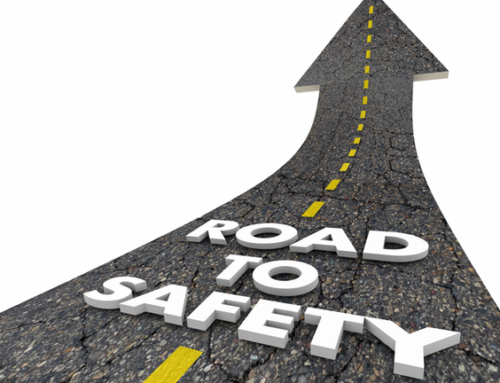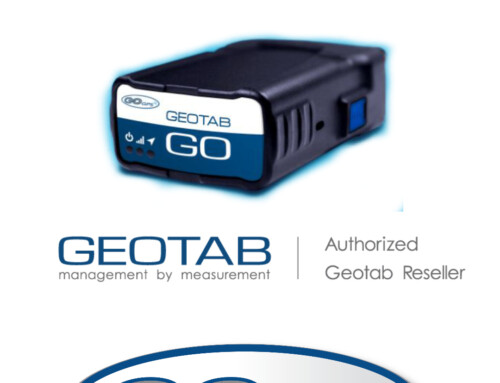Catching fatigue and distractions before they happen
Driving a truck is a difficult and often grueling job. That is why many drivers wrongly believe they are supposed to be tired, said Al LaCombe, vice present of safety and risk management for Dupré Logistics in Lafayette, LA.
Dupré began addressing fatigue in 2001, when it hired Circadian Technologies to help devise a management program. Much of that work focused on reviewing logbooks.
“We were legal, but had an opportunity to improve safety by looking at schedules and start times,” said LaCombe.
In the years since Dupré’s initial foray into fatigue management, there has been a greater awareness of the danger. As many as 100,000 reported crashes involving all vehicles are caused in part by driver fatigue each year, the National Highway Traffic Safety Administration reported. And according to the National Safety Council, 13% of all fatal truck crashes and 28% of single commercial vehicle crashes involve fatigue.
Fleets are also battling the growing crisis of distracted driving. The National Center for Statistics and Analysis found more than 10% of fatal crashes and 15% of injury crashes are related to distracted driving.
These issues “not only cause loss of lives but also property and . . . impact the industry from a public image perspective,” said Sandeep Kar, chief strategy officer with Fleet Complete. While in the near-term these problems will “continue to get worse,” Kar believes “technology can be used to reward drivers for safe driving and also to coach them in best practices in safe driving.”
Commercial drivers are particularly vulnerable to fatigue because they are often on long trips over monotonous roads. Some drivers experience “micro-sleeps,” which are involuntarily lapses into sleep for up to 15 seconds. In response, various high-tech and low-tech companies are offering a range of products.
For example, Omnitracs’ suite of products include a “predictive model” that incorporates hours-of-service (HOS) data to help determine if a driver “could be at risk of a fatigue event,” said Lauren Domnick, senior director of analytics and modeling.
Even as Omnitracs continually improves its algorithms to better monitor real-time driving behaviors, weather, and traffic, Domnick stressed the need for “human intervention” between a manager and the driver. That is because the reason for a driver’s fatigue may not have anything to do with working long hours or at night. Something as simple as a malfunctioning air conditioner could be “a contributing factor to fatigue,” she said.
LaCombe said Dupré’s research has shown that working night hours alone does not cause fatigue. He said Dupré is more concerned after a driver alters his or her normal shifts. This immediately impacts sleeping and eating patterns, potentially making a driver more vulnerable to fatigue, regardless of age or health.
Photo: Charles Wilson
Dupré Logistics has studied fatigue management since 2001.
He also recommended fleets take fatigue into account as they consider adding new customers. They should consider length of haul and delivery times, and how that fits into existing operations.
Similarly, Pete Allen, chief client officer of MiX Telematics, said it is understandable truck drivers want to make the most of their time at home. That could mean a long, tiring weekend traveling to a Little League baseball tournament.
Additionally, there is no way to control the timing of an “unexpected life event,” such as an emergency hospital visit for a sick family member. All of this could mean “not starting the week on the right footing,” Allen explained.
Besides offering video cameras and telematics, the company has integrated the Guardian System from Seeing Machines, which detects both real-time driver fatigue and distraction detection. The system detects eye movements such as drooping eyelids and triggers steps such as an audible alarm and vibration of the driver’s seat.
“Tired drivers have more risky driving events,” Allen said. “And being distracted is also risky.”
Seeing Machines’ offerings are available in the Geotab Marketplace. Other available solutions are the Life by SmartCap, which leverages EEG predictive technology to monitor and provide alerts for fatigue levels, and the Trucking Fatigue Meter, which analyzes HOS data every 15 minutes and recalculates fatigue levels.
Sherry Calkins, an associate vice president with Geotab, said that while drivers and fleet managers “are more accepting of these technologies,” there is not likely to be a significant change “unless we are able to alter the behavior of drivers.”
One “low-tech” tool trying to eliminate distracted driving came from Scott Rownin, who founded SafeRide in 2012 after realizing “he was addicted to my own device” and had to come up with a way to “relearn to drive without a phone in hand.”
The SafeRide app does just that. It automatically blocks cell phone usage when paired with a vehicle. It is free to consumers and will be available to fleets at a very low cost. It creates a “soundproof” wall between the driver and phone, though it allows for emergency alerts on HOS and critical navigation updates. Rownin called it a perfect add-on for commercial drivers who operate under a “bring-your-own-device” policy.
Meanwhile, offerings from traditional telematics and video companies including Lytx, SmartDrive, PeopleNet, MobileEye, Spireon, FleetCam, and others are addressing driver behaviors by allowing fleet executives to customize these systems to monitor nearly anything they choose.
Netradyne’s Driveri vision-based platform provides real-time notifications when drowsy or distracted issues are identified. Audible sounds and other audio notifications are designed to work directly with the driver objectively reducing risk as quickly as possible.
Another company in this space is Fleet Complete, whose FC Vision video telematics solution can “dynamically detect safety-critical issues either arising from distracted driving or from driving conditions, or other vehicles around the host vehicle,” said Kar. Its CONNVEX analytics platform uses artificial intelligence (AI) to further enhance safety.
Artificial intelligence is also a cornerstone of Nauto’s system, which can provide drivers real-time notifications when distracted. The company started in the taxi and limo space and currently serves fleets up to Class 5-6. Its system can look at body posture and head position and learn individual patterns. That way, it can accurately determine how individual people drive and better determine when they are looking at a cell phone or being potentially distracted by infotainment.
The system has a three-tiered alert, with a “mild” distraction of two-to-three seconds resulting in a couple of beeps for general awareness, said Sanket Akerkar, senior vice president of global fleet and insurance business at Nauto. An event between 3.1 and 4.5 seconds causes not only beeping but an audible “distracted” warning.
Akerkar said testing shows that “having the device describe what it is seeing had a much more positive impact on the driver.” Anything over 4.5 seconds is considered “severe” and results in an escalating series of beeps in quick succession in order to spark a reaction. He said using the system can result in a reduction of 35% of overall claims, with some drivers seeing a 70% drop in “distracted” events.
“The combination of increased data analysis, with an AI based platform to consume and utilize the data, along with vehicles that begin to electronically communicate with each other, will significantly start to change how drivers prepare and reduce fatigue when driving,” said Adam Kahn, vice president of fleet business for Netradyne. “The increased amount of data that is meaningful through its application with the driver, the vehicle, and the work assignment will yield a reduction in incidents.”
A similar message was shared by Chris Ransom, associate director of solutions engineering at Verizon Connect. He cited the advancements made this decade around tracking dangerous driving events such as speeding, hard braking, and even seat belt usage.
When incorporating video cameras and advanced telematics, fleets are beginning to better connect the reasoning behind these events. For example, rather than just recording a harsh stop, the combination of technologies can help determine if it was due to almost missing a stop sign, he explained.
That could alert a fleet to consider whether the driver could be fatigued far more easily than in the past.



